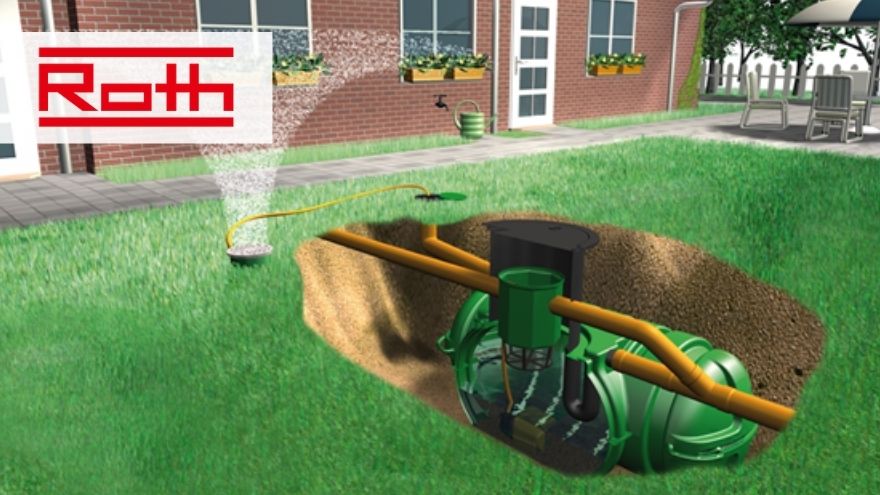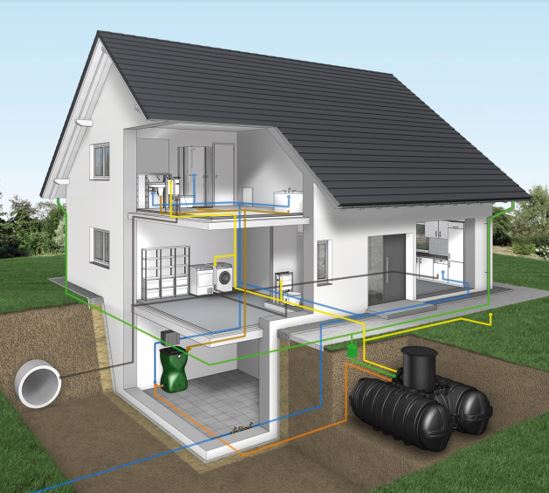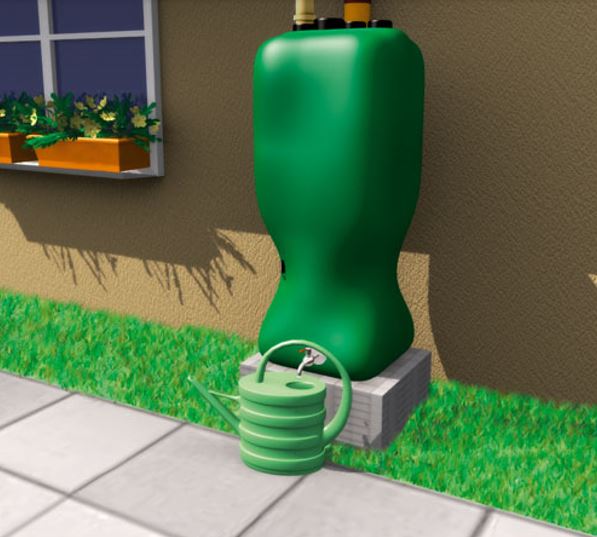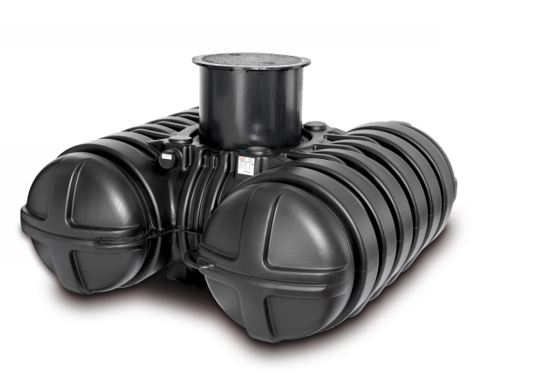Ecological awareness in our country is still growing, and Poles are increasingly willing to use environmentally friendly solutions. One of them is rainwater collection. According to estimates, it can meet over 45% of the needs of every household. By minimizing water consumption, the earth's resources are systematically decreasing, you can also save a lot. Get to know Roth 's ecological rainwater tanks !

From the article you will learn:
- what is the average daily water consumption by 1 person,
- what tanks are suitable for collecting water in a single-family house,
- which home sewage treatment plants are worth considering.
Why is it worth collecting rainwater?
 One person uses about 150 liters of water a day. By rationally managing this resource, you can save about 50 liters. For the entire household, this provides significant value. It should also be noted that drinking water does not need to be (or even should not) be used for some purposes. Rainwater is enough to flush the toilet, water the garden or wash the car.
One person uses about 150 liters of water a day. By rationally managing this resource, you can save about 50 liters. For the entire household, this provides significant value. It should also be noted that drinking water does not need to be (or even should not) be used for some purposes. Rainwater is enough to flush the toilet, water the garden or wash the car.
Rainwater is soft and has a high level of acidity, making it perfect for the above-mentioned applications. The best way to collect it is to catch it from the roofs of buildings covered with tiles. Other types of surfaces are not used due to the possibility of contamination remaining on them.
The profitability of collecting rainwater is best seen in statistics. Assuming that the average rainfall in Poland is 600 mm/m 2 , approximately 120 m 3 of rainwater can be collected per year from each roof with an area of approximately 200 m 2 . The type and size of the installation for using the collected water are determined by individual spatial conditions, the level of demand and preferences regarding the comfort of using the system.
Check out Roth rainwater tanks!
Roth rainwater storage system
Installations for collecting rainwater in single-family buildings do not require a large-volume tank. It is assumed that for every 25 m 2 of roof there should be no more than 1 m 3 of container capacity . When choosing the Roth system for collecting rainwater, the user has the option of above-ground and underground tanks. The former are available in versions of 750, 1100 and 2000 liters, and the latter in versions of 1500, 3500 and 5000 liters.

In the case of Roth systems, you can choose one of three packages:
Twinbloc Haustechnik I
It is used to manage rainwater for domestic and economic purposes . The water collected in this way is suitable for flushing the toilet, washing, cleaning or watering plants. A standard set of this type includes:
- a tank or batteries of tanks with an overflow siphon, protected against access by small animals, and a telescopic inspection well with a lid,
- collection filter,
- pump suitable for the package,
- optionally - a rainwater unit with accessories that allow water to be drawn from a container and introduced into an independent water supply system.
Twinbloc Haustechnik II
This is a package very similar to the one described above. It has the same application and consists of the same elements. The only difference is actually that the use of Haustechnik II is recommended primarily in the case of a large distance between the tank and the internal installation .
Twinbloc Garten
This variant of the Roth system is intended only for collecting rainwater for household and garden purposes . The water stored in this way will be useful for watering plants, washing the car in the driveway or cleaning around the house. Package includes:
- Twinbloc rainwater tank with an overflow siphon, protected against access by small animals, and a telescopic inspection well with a lid,
- basket filter,
- a garden box independent of the container, allowing you to connect a garden hose,
- optionally - a submersible, multi-stage, single-phase pump mounted in the tank.
Technology of home sewage treatment
Roth systems allow you to save not only on water, but also on sewage. Thanks to home sewage treatment plants, which are an interesting alternative to septic tanks, you can significantly minimize your costs. The Roth Micro-Step series includes three types of technology to choose from:
Roth Micro-Star Twinbloc

This is a hybrid technology in the SBR reactor, combining activated sludge and a fixed bed . It is carried out in a single Twinbloc 5000 l tank or two such containers. The use of SBR is especially useful in the treatment of sewage with high quantitative and qualitative variability that occurs in households.
The device consists of three chambers:
- Initial purification with a cyclically controlled transport system to further chambers.
- Biological treatment with a tubular aerator and biomass generator (the sludge is redirected back to the first chamber).
- Secondary purification.
Roth MicroStar
SSB technology, in which the MicroStar system is implemented, allows not only aerobic wastewater treatment, but also sludge reduction . The system is located in one two-chamber 3000 l tank. In chambers separated by a wall, sewage is cyclically treated using the activated sludge method. The process consists of three phases:
- Aeration - wastewater treatment.
- Sedimentation - secondary treatment.
- Pumping out - draining purified water.
All cycles are performed by programming them through the control device. It is worth emphasizing the advantage that the Micro-Star system has over the traditional SBR installation. It stabilizes sewage sludge, so it can be removed even 3-4 times less often . In practice, this translates into a 3-5 year break between subsequent sludge removal processes.
Roth MicroSeptic
The last technology used by the Roth brand for household sewage treatment is based on percolation drainage . The MicroSeptic system is available in two types with a 2000 l or 3000 l septic tank.
The technological tank serves as a sedimentation tank in which both mechanical and biological purification processes take place. The container has a single chamber and its outlet is equipped with a filter basket that protects the system against thicker fragments of sewage entering the second stage of treatment.
Pre-treated sewage flows from the septic tank to the distribution well, where it is distributed evenly to individual seepage drainage threads. Aerobic treatment is the final wastewater treatment process.
Choose a rainwater tank and a home sewage treatment plant from Roth!
The Roth brand offers efficient and easy-to-use products that will allow you to save a lot on both water and sewage. In every home, good use can be made of a rainwater tank, which allows the collection and use of rainwater. If you incur additional costs of septic tank removal on your farm, you will also need a home sewage treatment plant . Check out the Roth assortment available in our hydraulic wholesaler !

